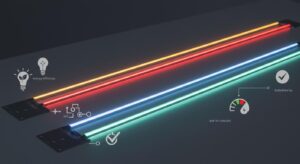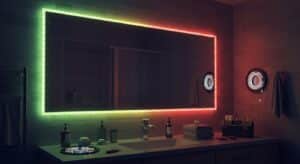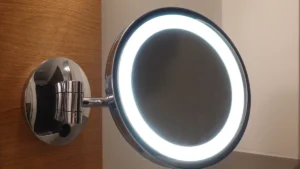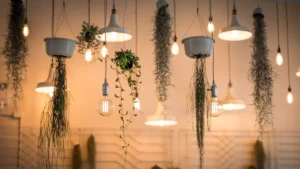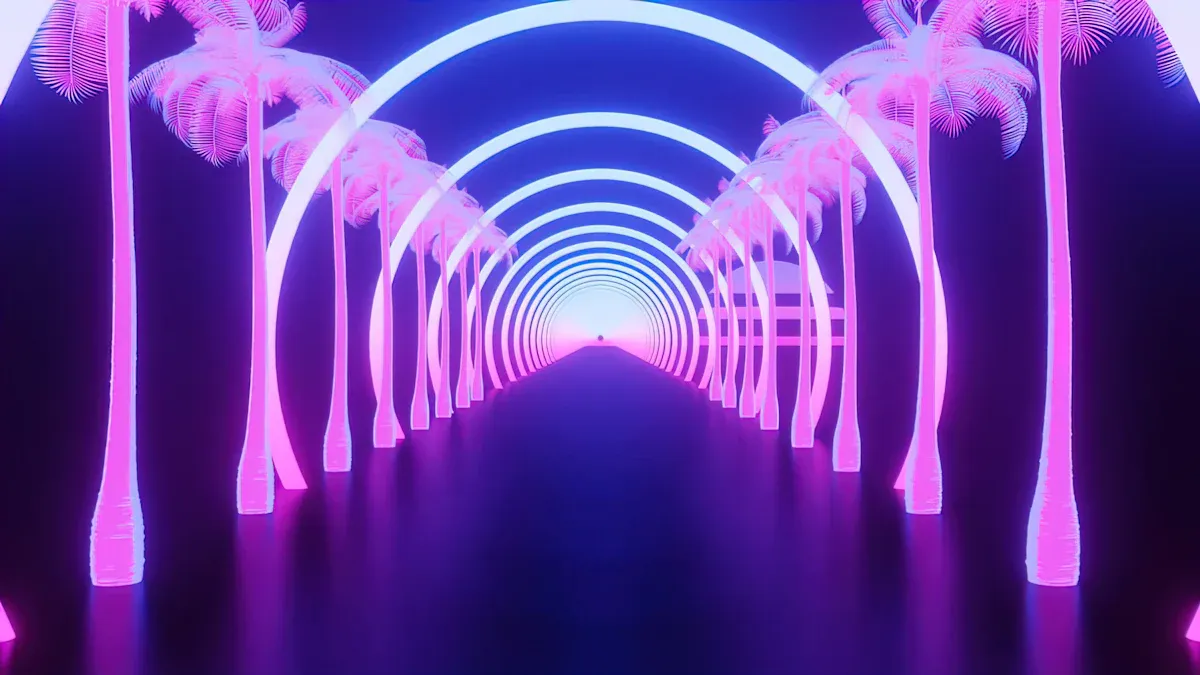
Choosing the right lights for your home can be hard. It is important to know the differences between RGB and RGBW neon LED strips. These bright lights have become popular lately. The market for LED neon lights was worth about $3.5 billion in 2022. It is expected to grow to about $8.1 billion by 2030. This growth is due to energy savings and customization. With this fast growth, you want to pick the best choice for your needs.
Key Takeaways
RGB neon LED strips mix red, green, and blue colors. They create many shades, which makes them great for decoration.
RGBW neon LED strips add white light. This allows for true white and more colors. They are perfect for both accent and functional lighting.
Both RGB and RGBW strips save energy. They use about 15 kWh each month, which helps lower electricity bills.
RGB strips are usually cheaper and easier to install. RGBW strips give better light quality but may need a more complex setup.
Think about your lighting needs: choose RGB for colorful effects or RGBW for bright, clear lighting in different spaces.
RGB Neon LED Strips
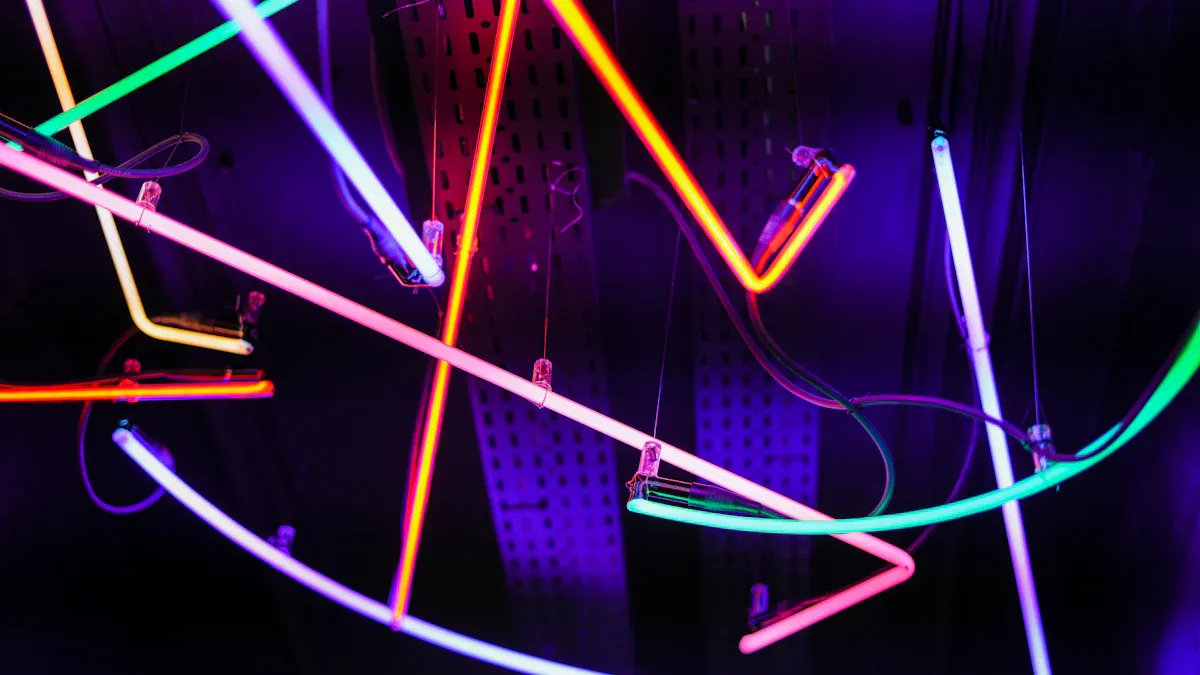
Color Capabilities
RGB neon LED strips are special because they mix red, green, and blue colors. This lets you make many different colors, which can improve the feel of your home. You can get many colors without buying extra strips. A controller helps you change and set colors easily. Here are some important points about their color abilities:
RGB neon LED strips can make many shades by mixing red, green, and blue.
You can create custom lighting effects for different moods and places.
These strips work well for homes and businesses.
Brightness and Efficiency
RGB neon LED strips are bright and efficient. They usually give off 80 to 100 lumens per watt (lm/W). In comparison, regular incandescent bulbs only give about 10 to 15 lm/W. This means you get more light while using less energy. Here are some more benefits about their efficiency:
RGB neon LED strips use less energy, averaging around 15 kWh each month.
Regular incandescent bulbs use much more energy.
You can have bright lights and save money on your electric bill.
With these features, RGB neon LED strips are a great choice for home lighting. Their color options and energy savings make them popular for creating fun and welcoming spaces.
RGBW Neon LED Strips
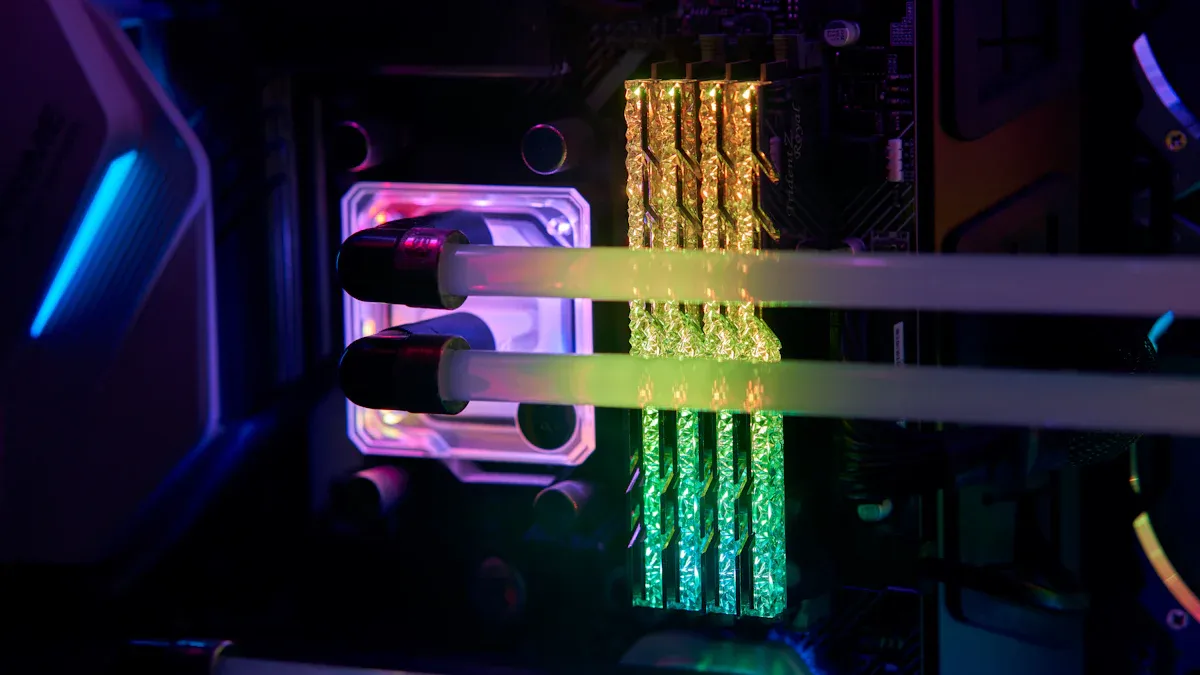
Color Capabilities
RGBW neon LED strips are special because they can make more colors. They have an extra white light along with red, green, and blue lights. This helps create better white light and richer colors. Here are some important points about their color abilities:
RGBW LED strips can make millions of colors by mixing red, green, blue, and white lights.
The white light helps create pure white, which regular RGB strips can’t do.
You can enjoy more colors, making your home lighting brighter and more lively.
Brightness and Efficiency
RGBW neon LED strips are also bright and efficient. They usually give off more light than regular RGB strips. This means you can light up your space better while using less energy. Here are some benefits of RGBW strips:
RGBW neon LED strips can produce up to 100 lumens per watt, so they are very efficient.
They use little energy, averaging about 15 kWh each month.
You can have bright, nice lighting without high electricity bills.
With these features, RGBW neon LED strips are a great choice for many uses in your home. Whether you want a cozy feel or to highlight certain areas, these strips are flexible and efficient.
Comparing Neon LED Strips
Key Differences
When you pick between RGB and RGBW neon LED strips, think about some key differences. These differences can change how your lights look and how happy you feel with them. Here’s a simple look at the main features:
Feature | RGB | RGBW |
|---|---|---|
Raw Materials | Has red, green, and blue lights. | Has red, green, blue, and white lights. |
Color Range | Limited to mixing basic colors. | Wider range because of the white light. |
Brightness | Bright but not enough for general use. | Brighter with special white lights. |
White Light Quality | Makes off-white light. | Gives true white light. |
Power Consumption | Usually lower because of fewer lights. | Higher because of the extra white light. |
Cost Budget | Usually cheaper. | More expensive because of extra features. |
Lighting Applications | Great for decoration and mood lighting. | Good for both decoration and regular use. |
This table shows how RGB strips focus on mixing colors, while RGBW strips give more brightness and true white light. You can see that RGBW strips are more flexible for different lighting needs.
Cost Considerations
Cost is another big thing to think about when choosing RGB or RGBW neon LED strips. RGB strips usually cost less because they are simpler and need fewer parts. On the other hand, RGBW strips cost more because they have an extra white light, which makes them more complex.
Here are some average prices to keep in mind:
Basic single-color LED strips: about $10 per meter
RGBW LED strips: between $20 to $30 per meter
When you plan your budget, remember that RGB strips might save you money at first. But RGBW strips can give you better light quality and more options.
Also, how hard it is to install can change your total costs. RGB LED strips are easier to set up because they have simpler wiring. But RGBW strips need more wiring and special controllers, making them harder to install. You should think about the extra white light when planning for RGBW setups.
By looking at these differences and costs, you can make a smarter choice that fits your lighting needs and budget.
Best Uses for RGB Neon LED Strips
Accent Lighting
RGB neon LED strips are great for accent lighting. They add style to different areas in your home. You can use them to highlight features, artwork, or decorations. Here are some popular ways to use RGB neon LED strips for accent lighting:
Dynamic Lighting Effects: Make bright displays that catch the eye.
Customizable Colors: Change colors to fit your style or mood.
Application Area | Description |
|---|---|
Bedroom | Brighten the bed area with LED strip lights for a calming feel. |
Wall-mounted Shelves | Light up shelves in living rooms, bedrooms, or bathrooms to show off items. |
RGB neon LED strips save energy and use less power than regular neon lights. This means lower electricity bills. They last a long time, up to 50,000 hours, so you won’t need to replace them often. The strips are flexible, allowing for creative designs. You can easily change the colors and brightness to fit different moods and events.
Mood Lighting
For mood lighting, RGB neon LED strips work really well. They offer many options to create the right feel in any room. Here are some benefits of using RGB neon LED strips for mood lighting:
Vast Color Range: With 16 million colors and 45 lighting settings, you can match the lighting to your mood.
Creative Designs: Shape the strips in different ways to make your space look better.
Smart Control: Use features like music sync and smart controls through apps or voice commands for easy changes.
To set the right mood, try these color combinations:
Color | Mood Effect |
|---|---|
Blue | Helps you relax and reduces anxiety |
Lavender | Soothing and calming |
Light Pink | Fun and adventurous, but still calming |
Warm Colors | Creates a cozy and inviting feel |
Using RGB neon LED strips for mood lighting can turn your space into a comfortable retreat. Their flexibility and ease of use make them a great choice for improving your home.
Best Uses for RGBW Neon LED Strips
Accent Lighting
RGBW neon LED strips are great for accent lighting. You can use them to highlight special features, artwork, or decorations in your home. The white light makes everything brighter and colors look better. Here are some popular ways to use them for accent lighting:
Highlighting Artwork: Use RGBW strips to make paintings or sculptures stand out.
Framing Architectural Features: Light up unique designs like arches or columns.
Creating Ambiance: Change colors to match your theme for gatherings.
Functional Lighting
RGBW neon LED strips are also good for functional lighting. They give bright, clear light that works well in many places. You can use them in workspaces, kitchens, or anywhere you need good light. The table below compares RGB and RGBW strips for functional lighting:
Feature | RGB Strips | RGBW Strips |
|---|---|---|
White Light Quality | Makes colder, artificial white | Gives pure, warm white light |
Color Range | Limited to RGB colors | Wider range including pastels |
Versatility | Mainly for ambient lighting | Good for both ambient and functional lighting |
With RGBW strips, you get more colors and true white light. This makes them great for tasks that need focus and clarity. Whether you are cooking, working, or studying, RGBW neon LED strips can improve your space.
In conclusion, RGB and RGBW neon LED strips have different benefits. RGB strips are great for bright colors, so they are perfect for decoration. But they do not have a special white light. On the other hand, RGBW strips give a brighter and clearer white light. This makes them good for both accent and regular lighting.
When picking between the two, think about what you need. If you want colorful lights, RGB strips are a good choice. If you need both color and bright lighting, RGBW strips are better.
Keep in mind your home lighting goals. This will help you choose the right neon LED strip for your home.
FAQ
What is the main difference between RGB and RGBW neon LED strips?
RGB strips mix red, green, and blue lights to create colors. RGBW strips add a white light, allowing for true white and a wider color range.
Can I use RGB and RGBW strips together?
Yes, you can use both types together. Just ensure your controller supports both RGB and RGBW configurations for seamless integration.
How long do neon LED strips last?
Most neon LED strips last up to 50,000 hours. This long lifespan means you won’t need to replace them often.
Are RGBW strips more expensive than RGB strips?
Yes, RGBW strips typically cost more due to the additional white light feature. Expect to pay around $20 to $30 per meter for RGBW strips.
Can I control the colors of these strips remotely?
Yes, many RGB and RGBW strips come with remote controls or smartphone apps. This allows you to change colors and settings easily from anywhere in your home.
